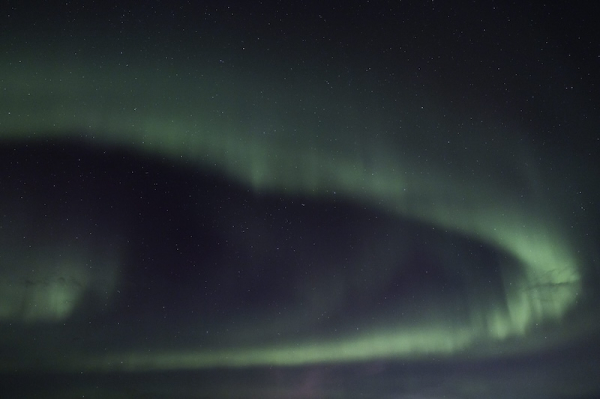
Northern lights are seen in Kolari, Finnish Lapland, on December 21, 2024. LEHTIKUVA
- Next Article Helsinki trams heated using energy from braking
The Finnish Meteorological Institute (FMI) has announced elevated chances of seeing the northern lights this week, with favourable conditions expected on Tuesday and Wednesday nights depending on location.
According to the agency, skies are forecast to be clearest in northern Finland on Tuesday night, offering strong potential for aurora visibility.
In central and southern areas, the best chance to view the aurora borealis is likely on Wednesday evening, weather permitting.
The announcement was published on the FMI’s website and social media channels, urging skywatchers to monitor forecasts and visibility maps.
The aurora borealis is a result of space weather — a term used to describe the effects of solar wind and solar flares in near-Earth space and the upper atmosphere. Auroras form when charged particles from the sun interact with Earth’s magnetic field and atmosphere, producing glowing light displays.
FMI tracks geomagnetic disturbances across Finland using a network of magnetometer stations. These instruments measure fluctuations in Earth’s magnetic field and generate what’s known as the R-index — a key indicator of aurora activity.
The system uses two thresholds to signal visibility potential. If the lower threshold is crossed, dim auroras are possible and shown on FMI maps in yellow. Exceeding the higher threshold signals a strong likelihood of visible auroras, which are then marked in red.
Live data and aurora forecasts are available on the FMI’s space weather service in English. The platform includes bar charts showing disturbance levels, station-specific R-index readings, and an aurora map updated with real-time observations. Data from Sodankylä is provided by the Sodankylä Geophysical Observatory at the University of Oulu.
Sky conditions will remain the key factor in visibility. Clear, dark skies away from city lights offer the best chance to observe the phenomenon. Cloud cover and light pollution can obscure even strong auroral activity.
FMI recommends checking updated space weather maps in the evening hours, especially in areas with open views to the north.
HT
- Next Article Helsinki trams heated using energy from braking
Source: www.helsinkitimes.fi
